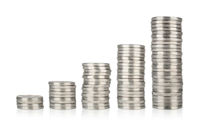Posted on February 15, 2023

Buffalo nickels are among the most popular collectors' coins. These coins have a fascinating history and had only the minimum 25-year run, adding to their intrigue and value. You might find several versions of the buffalo nickel, many of which are extremely valuable.
President Theodore Roosevelt spearheaded the project of redesigning American coinage, hiring Augustus Saint-Gaudens to develop new designs for the U.S. Mint. Federal law prohibited the redesign of any coin that had been in circulation less than 25 years, which limited the scope of the coin revitalization project. Saint-Gaudens designed the Eagle and Double Eagle, but he passed away unexpectedly in 1907 before designing a new nickel.
The redesign of the nickel fell to Saint-Gaudens' protege, James Earle Fraser. One of Fraser's most well-known works is the sculpture The End of the Trail, which features a weary Native American astride his horse. He completed the sculpture as a teenager. This stunning work earned him a place at the cole des Beaux-Arts in Paris. Upon returning to the United States, Fraser went to study under Saint-Gaudens. [1]
In 1911, Treasury Secretary Frank MacVeagh wrote a letter to his father about the importance of the nickel as an iconic coin. Shortly after, the Taft administration commissioned Fraser to redesign the nickel, which hadn't been updated since the Liberty Head nickel was released in 1883. [2]
Fraser believed in designing American coinage that featured uniquely American designs. He grew up in the American West, witnessing the challenges that the Native American peoples faced in Minnesota. He may have also witnessed the great bison in the area. Fraser said of his design, 'I found no motif within the boundaries of the United States so distinctive as the American buffalo.' [3]
The terms bison and American buffalo are often used interchangeably in reference to this animal, though a true buffalo is native to Asia or Africa, while only bison are found in North America. [4] A bison named Black Diamond served as the model for Fraser's reverse design on the buffalo nickel. Black Diamond was a resident of the New York City Bronx Park Zoo. [3]
The obverse of the buffalo nickel features a Native American warrior in profile. The man wears his hair in braids with two feathers. Along the man's shoulder is the coin's date and 'F' for Fraser. Along the outer edge of the right-hand rim is the word 'LIBERTY.' Fraser used three models for the Native American man: [3]
Clarence Hobbs of the Hobbs Manufacturing Company complained about the redesign of the nickel, insisting that his machines could not properly strike the new coin. He insisted that his machines would mark the nickels counterfeit and demanded a different design. However, Treasury Secretary Franklin MacVeagh refused Hobbs' demands, and the Mint eventually shut the Hobbs Manufacturing Company down. [5]
You can find the buffalo nickel in several varieties. The most valuable are the rarer designs, including:
If you believe that you have one of these rare nickels, it's advised that you have it appraised by an expert. Counterfeits are common and often difficult to spot. Genuine finds can carry great value.
The buffalo nickel is a historic coin that's popular among collectors both for its unique design and its rarity value. Many buffalo nickels are heavily worn or poorly struck, so a well-preserved version is an exciting find. This design was sculpted in high relief, which made it difficult to strike perfectly. The metal had to flow to every portion of the die, and the die had to strike from a very precise spacing to get a detailed coin. [11]
In 1938, the Jefferson nickel replaced the buffalo nickel, adding to this coin's rarity. The buffalo nickel was minted for just 25 years, which is the minimum for any coin. From its rich heritage evident in the Native American imagery to the uniqueness added by the Hobbs Affair, this coin is a compelling piece for any collection.
If you have a buffalo nickel, examine it carefully to determine when and where it was minted so you can properly place this piece of history in America's timeline.
Article Sources
1. The Coin Vault. 'The History of the Buffalo Nickel,' https://www.thecoinvault.com/p-16585-the-history-of-the-buffalo-nickel.aspx. Accessed August 31, 2020.
2. Ponderosa Ranch Outfitters. 'The Story of the Buffalo Nickel,' http://ponderosaranchoutfitters.com/the-story-of-the-buffalo-nickel/. Accessed October 27, 2020.
3. History. 'The intriguing history of the rare buffalo nickel,' https://www.history101.com/the-intriguing-history-of-the-rare-buffalo-nickel/. Accessed August 31, 2020.
4. Smithsonian's National Zoo & Conservation Biology Institute. 'It's Bison, Not Buffalo. And Other American Bison Facts,' https://nationalzoo.si.edu/animals/news/its-bison-not-buffalo-and-other-american-bison-facts. Accessed August 31, 2020.
5. A Very Special Coin Collection. 'The History of the Buffalo Nickel/Indian Head Nickel,' http://www.acoincollection.com/history-of-the-buffalo-nickel-indian-head-nickel/. Accessed October 27, 2020.
6. USA Coin Book. '1916 Buffalo Nickels: Double Die Obverse,' https://www.usacoinbook.com/coins/921/nickels/buffalo/1916-P/doubled-die-obverse/. Accessed August 31, 2020.
7. Buffalo Nickel. '1918-D '8 Over 7' Buffalo Nickel,' https://buffalonickel.org/1918-d-8-over-7-buffalo-nickel/. Accessed August 31, 2020.
8. USA Coin Book. '1924 S Buffalo Nickels,' https://www.usacoinbook.com/coins/943/nickels/buffalo/1924-S/. Accessed August 31, 2020.
9. CoinSite. '1937-D 3 Legged Buffalo Nickel,' https://coinsite.com/1937-d-3-legged-buffalo-nickel/. Accessed August 31, 2020.
10. CoinStudy. '1921 Nickel Value,' https://www.coinstudy.com/1921-nickel-value.html. Accessed August 31, 2020.
11. CoinWeek. 'Keys to Collecting the Buffalo Nickel and Other Nickels,' https://coinweek.com/us-coins/keys-to-collecting-the-buffalo-nickel-and-other-nickels/. Accessed August 31, 2020.